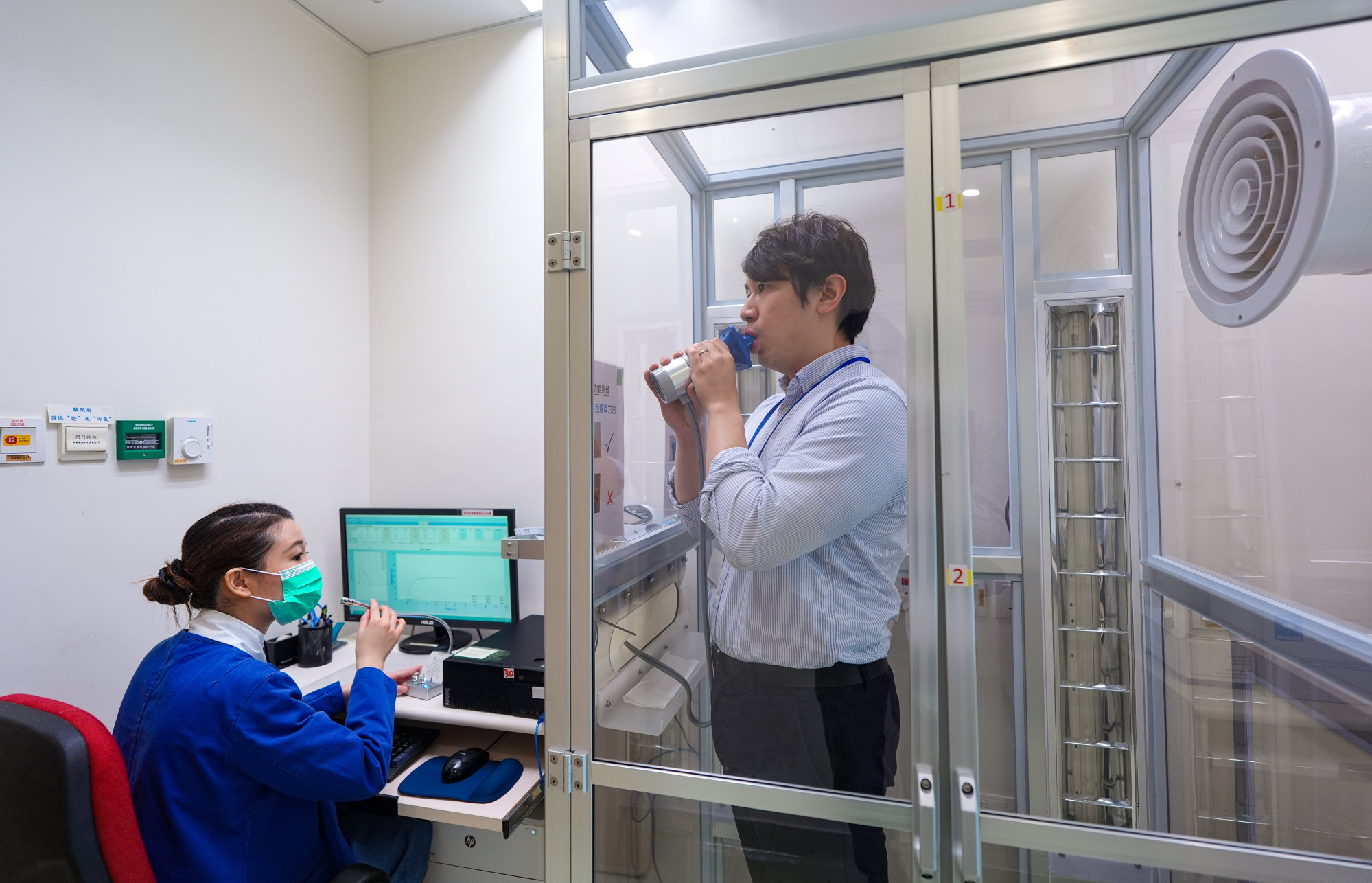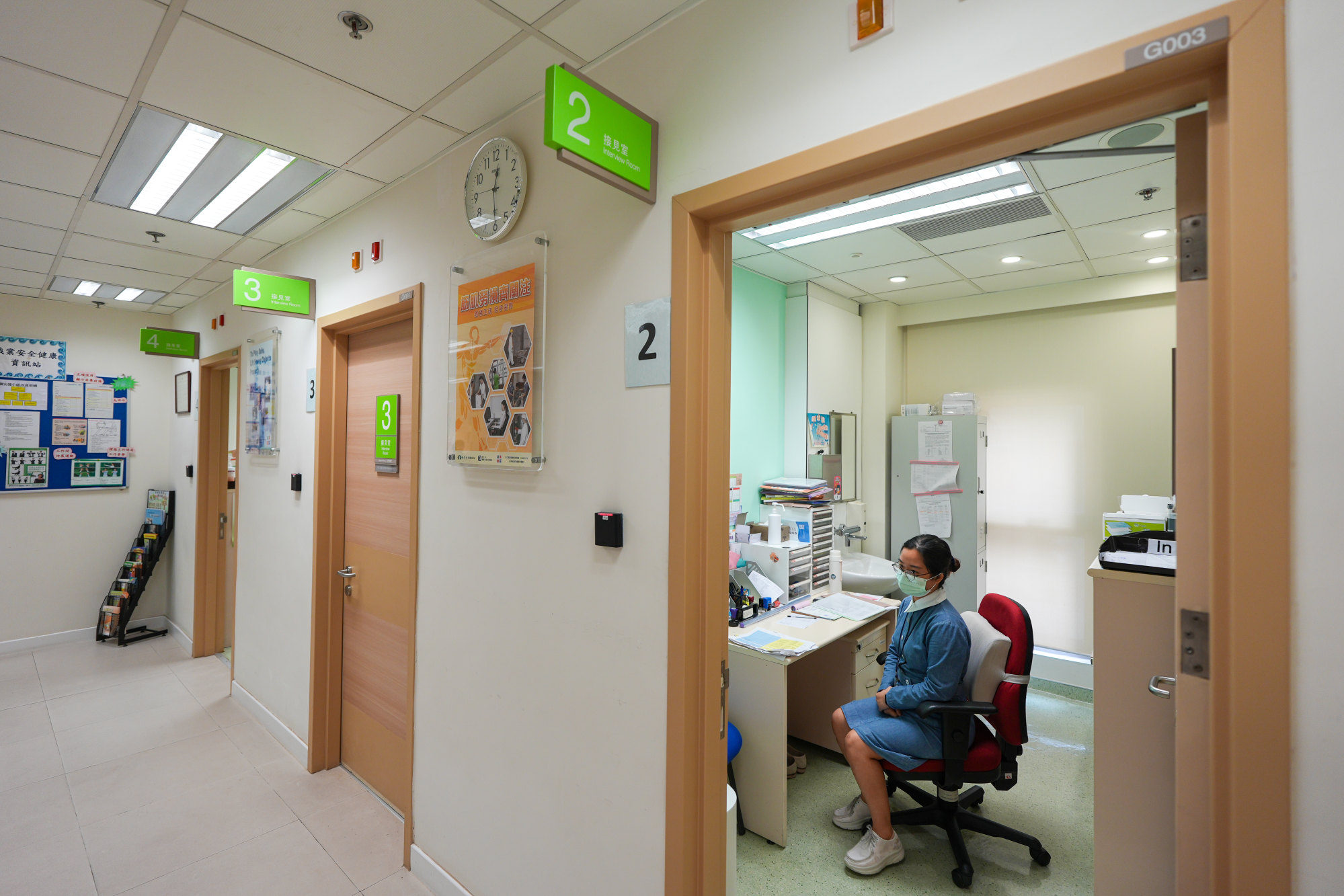
Hong Kong to update heat stress at work warnings after monitoring index for longer
- Labour Department plans to launch updated heat stress warning system, guidelines to prevent heatstroke at work in May
- It will also roll out revised code of practice for working in confined spaces after two sewer workers allegedly inhaled toxic gas and died in manhole last week
A heat stress warning system in Hong Kong for outdoor workers to take a break will be adjusted to observe weather changes over a longer period to prevent sudden and disruptive shifts in signals that left some employees confused last summer.
The Labour Department said on Monday that it was planning to launch the updated heat stress warning system and a set of revised guidelines on the prevention of heatstroke at work in May.
It also said it would roll out an updated code of practice for working in confined spaces in four to five weeks, earlier than it was originally scheduled in late June, following a fatal accident in which two sewer workers died in a manhole in Sha Tin last week.
The government first introduced the three-tier heat stress at work warning system in May last year based on the Hong Kong Heat Index co-developed by the Observatory and Chinese University. The index considered various factors including temperature, relative humidity and intensity of sunlight.

But the warning system, in which an amber signal would be issued once the heat index hits 30 and upgraded to red or black if the rate reaches 32 or 34, was criticised for the abrupt issuing and cancelling.
The department’s guidelines recommend employees stop working for 15 to 45 minutes every hour whenever a heat alert is issued, but there was a case last year in which the amber warning was issued, cancelled and reissued within two hours.
“Under the revised arrangement, if we hope to cancel the amber warning, we will observe the moving average of the heat index for a longer period to ensure there is a trend of temperature getting less hot,” Vincent Fung Hao-yin, deputy commissioner for labour, said.
The department said they would take reference from the heat index data for an hour, rather than the current 30 minutes.
The warning would also be issued together with the Observatory’s “extremely hot weather” special alert, which is issued if the temperature generally reaches 35 degrees Celsius.
Death of 2 Hong Kong sewer workers sparks calls for action to plug safety gaps
Dr Wan Yuen-kong, the department’s occupational health consultant, said most of the amber heat warnings were issued at the same time as the extremely hot weather alert in the past.
He said that linking the two sets of warnings together could prevent the confusing situation that happened last year when the extremely hot weather alert was up on some days but the amber warning was not issued.
Authorities also encouraged individual industries to draft their guidelines for workers in handling heat stress at work. Fung said the one for the property management sector should be ready next month, while the cleaning services sector was also looking into its own version of guidance notes.
Meanwhile, the department said it was likely to launch the revised code of practice for working in confined spaces next month, the earliest after a review that began late last year.
The updated code would require the proprietor or contractor to take video recordings at the entrance and exit of a confined space throughout the entire work period to monitor whether workers there had complied with safety precautions.
“The video recordings can help raise workers’ awareness and serve as a reminder,” said Dr Eddy Ng Kwok-po, also an occupational health consultant with the department.
The video records would need to be kept for a year after the work was completed and be available for inspection, the department added.

The revised version of the code, first published in 2000, would also define what constituted a job that involved “underground pipework”.
Fung said the department hoped to speed up the launch of the revised guidelines after the two sewer maintenance workers allegedly inhaled toxic gas and died in a manhole last Monday.
The workers did not have to enter the manhole as work procedures only required them to use high-pressure water jets to do the cleaning, according to initial investigations.
Separately, the labour authorities would also expand a pilot programme on rehabilitation for employees injured at work, first launched in September 2022 for the construction sector, to cover workers from the industries of catering and hotel, as well as transport and logistics, from May 9.
The scheme targets workers who suffered from musculoskeletal injuries or diseases from work and have been or are expected to be absent for six weeks or more.
They could receive private outpatient rehabilitation services while paying the same cost as public hospitals under the scheme.

